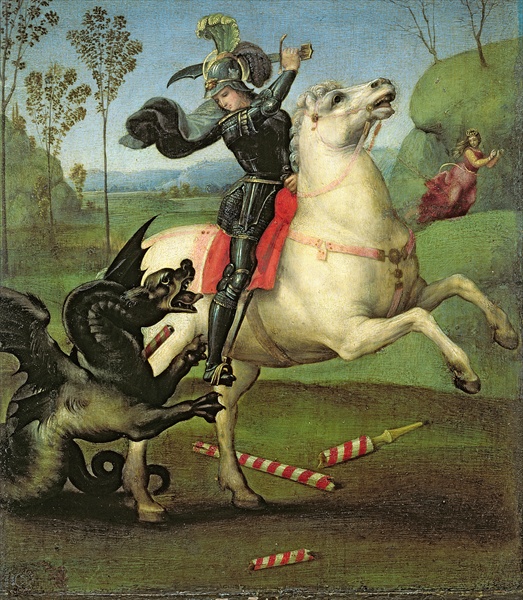Saint George and the Dragon
Story
Appointed to the order of the Garter in 1504 by Henry VII of England, Guido da Montefeltro, Duke of Urbino, commissioned Raphael to paint a picture of Saint George as a gift for the King, and appointed Baldassare Castiglione, author of The Courtier, to bear it to England. Until recently, the composition of the same subject in the National Gallery of Art, Washington was identified as the painting sent to England. However, it is debated now which of the two paintings was really sent to England.
Saint George is one of the most popular of Christian saints and is the patron saint of England. He was also a favourite subject of Renaissance artists, who depicted him slaying the dragon. According to legend, this monster infested a marsh outside the walls of a city and, with his fiery breath, could poison all who came near. In order to placate the dragon, the city furnished him with a few sheep every day. But when the supply of sheep was exhausted, the sons and daughters of the citizens became the victims. The lot fell one day on the princess, and the King reluctantly sent her forth to the dragon. Saint George happened to be riding by and, seeing the maiden in tears, commended himself to God and transfixed the dragon with his spear.
St George's lance has been broken in the struggle, but the proud knight is about to vanquish the dragon with the sword, and so free the princess, who is fleeing on the right. By the middle of the 16th century this panel formed a pair with Raphael's St. Michael. Even though the latter was painted somewhat earlier, the fact that they are the same size and have a comparable iconography implies that Raphael intended that the saints should belong together
